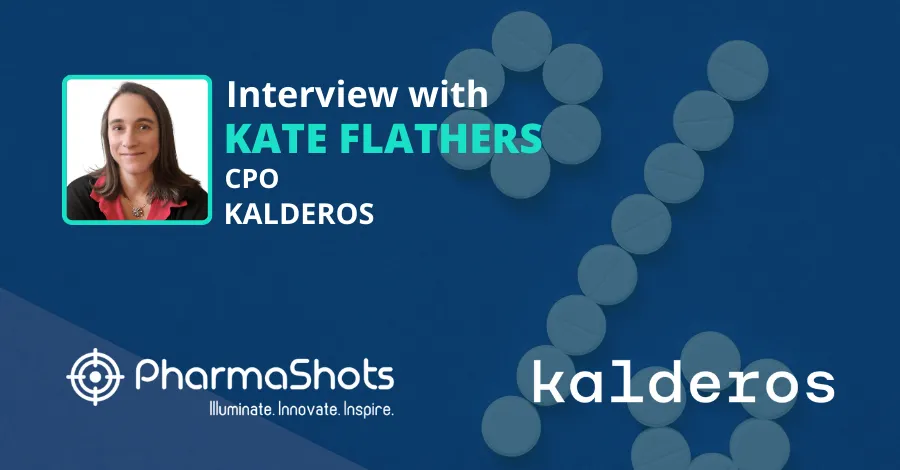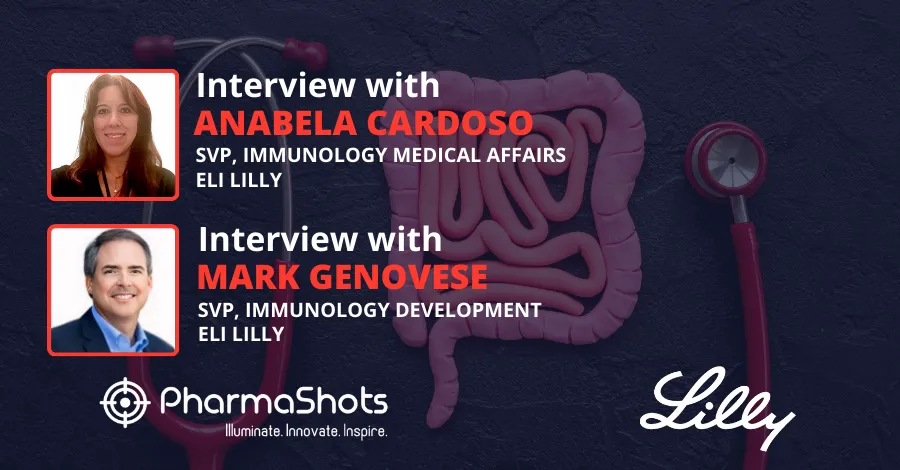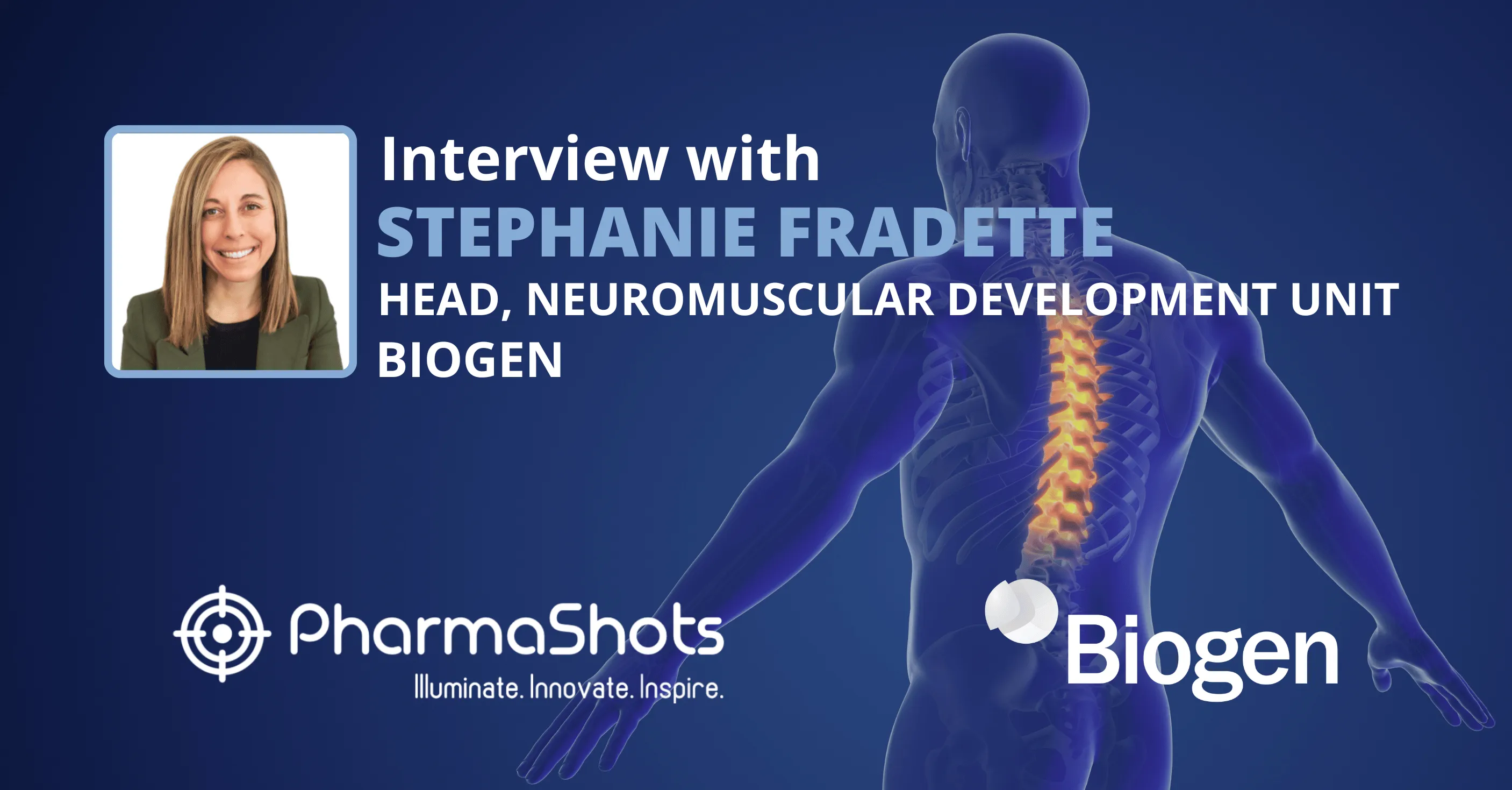
PharmaShots Interview: Biogen's Wildon R. Farwell Shares Insight on Phase 4 RESPOND Study of Spinraza
In an interview with PharmaShots, Wildon R. Farwell, M.D., MPH, Global Medical Head of Neuromuscular Diseases at Biogen shared his views on the P-IV RESPOND study that assesses the benefits of Spinraza in patients treated with Zolgensma.
Shots:
- RESPOND is a two-year, open-label study to evaluate the efficacy and safety of Spinraza (nusinersen) in infants and children with spinal muscular atrophy (SMA) who still have unmet clinical needs following treatment with gene therapy Zolgensma (onasemnogene abeparvovec)
- Spinraza is an ASO designed to target a root cause of SMA by increasing the amount of full-length SMN protein
- Biogen's SMA360° support program provides certain services that address nonmedical barriers to access for patients in the US
Tuba: Discuss the study design of global Phase 4 RESPOND study.
Wildon: RESPOND is a two-year, open-label study to evaluate the efficacy and safety of SPINRAZA (nusinersen) in infants and children with spinal muscular atrophy (SMA) who still have unmet clinical needs following treatment with gene therapy Zolgensma (onasemnogene abeparvovec).
The study will enroll 60 children up to 3 years old who are determined by the investigator to have the potential for additional clinical improvement after receiving Zolgensma.
- The primary study group aims to include 40 infants aged 9 months or younger (at the time of first SPINRAZA dose) who have two copies of SMN2 (likely to develop SMA Type 1) and received Zolgensma at 6 months old or younger.
- A second study group will include 20 children and generate data in patients with a broader age range (up to 3 years old at the time of the first SPINRAZA dose).
- After a screening period, participants will receive the approved 12 mg dosing regimen for SPINRAZA, which is four loading doses followed by maintenance doses every four months, over the two-year study period.
For more information about the RESPOND study and updates on available clinical trial sites, visit clinicaltrials.gov.
Tuba: Highlight Biogen's efforts in optimizing outcomes for patients with SMA.
Wildon: As the first approved SMA treatment, SPINRAZA transformed the future for individuals with SMA, and an unprecedented 11,000 infants, children, and adults have now been treated worldwide.1 It remains the only approved therapy to combine sustained efficacy across ages and SMA types with a well-established, longer-term safety profile up to seven years.
Building on its proven efficacy, Biogen is committed to exploring the potential of SPINRAZA through new and ongoing clinical trials to deliver even better clinical outcomes for patients.
Tuba: Why did Biogen choose to assess SPINRAZA in only Zolgensma-treated SMA patients?

Source: Exporter India
Wildon: People with SMA do not produce enough survival motor neuron (SMN) protein, which is critical for the maintenance of motor neurons that support sitting, walking and the basic functions of life, including breathing and swallowing. Once motor neurons are lost, they cannot be replaced.
The RESPOND study seeks to understand if the proven efficacy of SPINRAZA and its continuous production of SMN protein may also benefit patients previously treated with gene therapy who have had a suboptimal clinical response.
In clinical practice, there is a sense of urgency to address motor neuron loss in SMA from the earliest sign of symptoms, or even prior to symptoms, to prevent additional disease progression. As we continue to pursue improved outcomes for children with SMA, the need for additional benefit in some patients treated with the gene therapy Zolgensma has been observed.
It has been reported that to-date, four out of 10 patients in the long-term study of Zolgensma have subsequently been treated with SPINRAZA, in addition to real-world experience with SPINRAZA treatment following Zolgensma.2-5 We believe that, for certain SMA patients, motor neurons may be insufficiently treated by this gene therapy. Preclinical data also show that not all motor neurons are transduced by gene therapy, leaving some untreated.6,7
The RESPOND study will enroll children who are determined by the investigator to have the potential for additional clinical improvement after receiving Zolgensma. Physicians will use criteria that may include one or more of the following: suboptimal motor function (e.g., a score lower than 50 on the Children's Hospital of Philadelphia Infant Test of Neuromuscular Disorders [CHOP INTEND]); the need for respiratory support; abnormal swallowing or feeding ability; or other factors deemed relevant by the investigator.
We expect that the RESPOND study will generate valuable data to help inform future treatment decisions for our youngest SMA patients and their families.
Tuba: What are the Primary and Secondary outcomes in the two year RESPOND study?
Wildon: The primary endpoint is the total score on the Hammersmith Infant Neurological Examination Section 2 (HINE-2). Secondary endpoints include safety, change from baseline on additional motor function measures, other clinical outcomes (e.g., swallowing) and caregiver burden. Neurofilament levels, an exploratory endpoint, will also be evaluated as a marker of biological disease activity.
Tuba: Can we have a glance at the epidemiology of SMA? How is it affecting the lives of infants and adults?
Wildon: SMA is a rare, genetic neuromuscular disorder. It is characterized by a loss of motor neurons that results in progressive muscle atrophy and weakness. The disease impacts individuals of all ages, from infants and children to teens and adults, with a spectrum of disease severity. The incidence of SMA is estimated to be approximately one in 10,000 people and is one of the leading genetic causes of infant mortality.8
Traditionally, SMA has been divided into four primary types based on when symptoms begin and the highest motor milestones achieved. The clinical course of SMA is highly variable; however, progressive muscle weakness, motor function impairment and disability affect all individuals with SMA regardless of disease type. Without treatment, the majority of children born with the most severe form of the disease usually die before they turn 2 years of age without nutritional and respiratory support.
Until just a few years ago, no disease modifying treatments existed for SMA. Fortunately, there are three approved treatments now available with SPINRAZA being the first treatment approved in 2016 offering different dosing and administration options. These medicines have demonstrated unprecedented survival and improvement in motor function in patients with SMA.
Tuba: Shed some light on how Spinraza (nusinersen) works?

Source: Biogen
Wildon: SPINRAZA is an antisense oligonucleotide (ASO) designed to target a root cause of SMA by increasing the amount of full-length SMN protein, which is critical to maintaining motor neurons. ASOs are short, synthetic strings of nucleotides designed to selectively bind to target RNA. SPINRAZA's unique mechanism of action activates continuous SMN protein production where the disease starts within the CNS.
Tuba: Being the company's focus, what will be your next step in meeting the demands of patients with neuro disorders?
Wildon: There is still no cure for SMA, and unmet needs remain for many people living with the disease. At Biogen, we are committed to furthering research to expand the understanding of SMA and find new treatment options to help improve patients lives. We continue to explore the potential of SPINRAZA based on its established profile, including the safety and efficacy of a higher dose than currently approved. We are also pursuing next-generation gene therapy technologies for SMA.
Our research into neurofilaments as potential biomarkers may also aid in developing a more personalized approach for SMA treatment. Neurofilaments are released into the cerebrospinal fluid and blood following the breakdown or degradation of neurons caused by SMA or other neurodegenerative disorders. While further research is needed to understand their role as a biomarker, neurofilament levels could help provide additional information to understand SMA disease activity and monitor treatment response.
As pioneers in neuroscience, Biogen is committed to developing innovative medicines for individuals afflicted with diseases such as SMA, Alzheimer's disease, Parkinson's disease, amyotrophic lateral sclerosis and multiple sclerosis, which may have limited or no available treatment options. These are complex areas that require extensive research, as well as taking on significant scientific and financial risk.
Tuba: Discuss the clinical data that supports the efficacy of Spinraza in people with early and later-onset SMA.
Wildon: The clinical development program for SPINRAZA has evaluated more than 300 patients in 10 trials. Some patients have been on therapy for more than seven years as participants in our ongoing long-term extension study, SHINE. In addition to the clinical data, there is extensive real-world experience with SPINRAZA across ages with more than 11,000 patients having been treated worldwide.1
SPINRAZA was approved based on results from the randomized, sham-controlled, pivotal ENDEAR and CHERISH trials in patients with infantile-onset and later-onset SMA, respectively. These two pivotal trials are supported by additional studies across a broad range of SMA types and levels of function.
The efficacy of SPINRAZA for symptomatic infants was demonstrated in ENDEAR, with 51 percent of infants receiving SPINRAZA (n=73) considered motor milestone-responders compared to 0 percent of untreated infants (n=37). Those treated with SPINRAZA also saw a 47 percent reduction in the risk of death or use of permanent-assisted ventilation.9 In CHERISH, 57 percent of the children with later-onset SMA achieved a significant improvement in motor function due to SPINRAZA treatment (n=84).10
Perhaps the best window into the impact of SPINRAZA is the ongoing NURTURE study (n=25).11 The study is evaluating the benefits of early and continuous treatment with SPINRAZA in pre-symptomatic infants who were genetically diagnosed with SMA shortly after birth before they showed any signs of the disease. Results presented in 2020 suggest most children in the study achieved motor milestones within a normal timeframe, compared to the natural course of the disease. All study participants are alive after nearly five years, and they continue to make and maintain progressive gains in motor function. Ninety-six percent were walking with assistance at their last follow-up visit. The NURTURE study has been extended for an additional three years and will evaluate the longer-term efficacy and safety of SPINRAZA through 8 years of age.
In addition, two independent, real-world studies were published in 2020 that add to the growing body of evidence supporting the efficacy and safety of SPINRAZA in adults:
- Data from the largest supportive study of SPINRAZA to date, an open-label study including 139 adults with later-onset SMA (Types 2 and 3), was published in The Lancet Neurology.12 Results show a statistically significant improvement in mean Hammersmith Functional Motor Scale Expanded (HFMSE) scores from baseline of 1.73 points at 6 months (n=124), 2.58 at 10 months (n=92), and 3.12 (n=57). Additionally, the percent of patients with a clinically meaningful change from baseline (as defined by =3 point improvement) were 28 percent, 35 percent, and 40 percent at months 6, 10, and 14 respectively. Additional results can be found in the publication.
- Another study published in the Journal of Neurology, Neurosurgery and Psychiatry13 reinforces the clinically-meaningful efficacy of SPINRAZA in adults with SMA. This study of 116 SPINRAZA-treated patients includes the largest cohort of adult patients with SMA Type 3 investigated to date in a real-world setting (n=103) plus a smaller number of SMA Type 2 patients (n=13). Taken together, after 14 months of SPINRAZA treatment, 69 percent of adults showed clinically meaningful improvements in the Revised Upper Limb Module (RULM), HFMSE and/or the 6 Minute Walk Test.
- Note: The main limitation of these studies was the absence of a control group and the observational design, two factors which can limit the extent to which study outcomes can be attributed to treatment rather than other factors. There are other limitations that should be considered as well.
Tuba: What is Biogen's SMA360 program? How is it helping infants with SMA?
Wildon: Biogen's SMA360° support program provides certain services that address nonmedical barriers to access for patients in the U.S. This can include: coordinating the logistics of getting started with treatment; preparing a patient for the treatment journey by educating them on what to expect; and investigating insurance benefits to help people understand their current coverage. For more information, visit the SPINRAZA website.
References:
- Based on commercial patients, early access patients, and clinical trial participants through September 30, 2020.
- Zolgensma EU Summary of Product Characteristics (SmPC). Available at: https://www.ema.europa.eu/en/documents/product-information/zolgensma-epar-product-information_en.pdf. Accessed: December 2020.
- Finkel R, et al. Presented at the Muscular Dystrophy Association (MDA) 2020 Clinical & Scientific Conference.
- Harada Y, et al. Presented at the Muscular Dystrophy Association (MDA) 2020 Clinical & Scientific Conference.
- Finkel R, et al. Presented at the World Muscle Society's (WMS) 2020 Virtual Congress.
- Foust KD, Nurre E, Montgomery CL, Hernandez A, Chan CM, Kaspar BK. Intravascular AAV9 preferentially targets neonatal neurons and adult astrocytes. Nat Biotechnol. 2009 Jan;27(1):59-65. doi: 10.1038/nbt.1515. Epub 2008 Dec 21.
About Author:

Wildon R. Farwell is a Global Medical Head of Neuromuscular Diseases at Biogen.
Note: Wildon Farwell is no longer with Biogen
Related Post: ViewPoints Interview: Tetra Therapeutics Mark Gurney Shares Insight on Topline Results of BPN14770 for Fragile X Syndrome

This content piece was prepared by our former Senior Editor. She had expertise in life science research and was an avid reader. For any query reach out to us at connect@pharmashots.com














